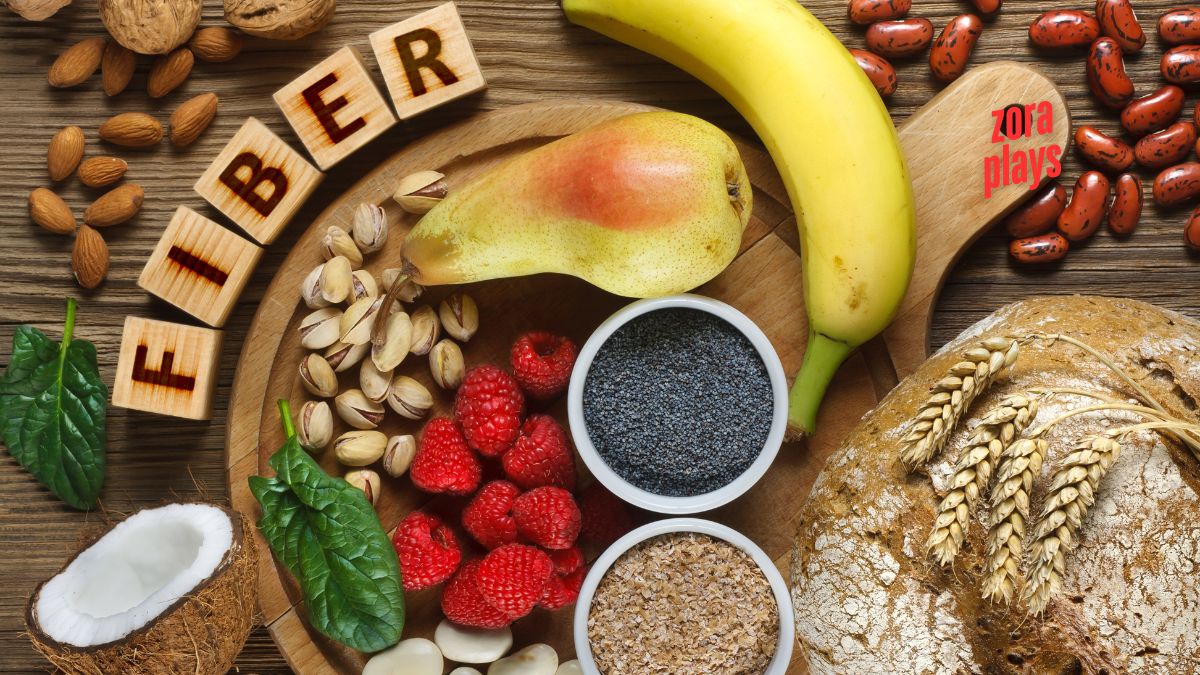In the quest for a healthier diet, one nutrient consistently stands out for its myriad benefits: fiber. Often overlooked, incorporating adequate fiber into your meals can transform your health, enhancing digestion, stabilizing blood sugar levels, and even aiding in weight management.
Let’s delve into how this secret ingredient can make your meals exponentially healthier and explore practical ways to boost your daily fiber intake.
Understanding Fiber: The Unsung Hero of Nutrition
Dietary fiber is a type of carbohydrate found in plant-based foods that the body cannot digest. Unlike other carbs that break down into sugars, fiber passes through the digestive system relatively intact, providing several health benefits along the way.
Types of Dietary Fiber:
- Soluble Fiber: Dissolves in water to form a gel-like substance, helping to lower blood cholesterol and glucose levels.
- Insoluble Fiber: Adds bulk to the stool, aiding in the movement of material through the digestive tract and promoting regularity.
The Health Benefits of Fiber
Incorporating fiber-rich foods into your diet can lead to significant health improvements:
- Enhanced Digestive Health: Fiber adds bulk to the stool and softens it, preventing constipation and promoting regular bowel movements.
- Blood Sugar Control: Soluble fiber slows the absorption of sugar, aiding in blood sugar regulation and reducing the risk of type 2 diabetes.
- Heart Health: A high-fiber diet can lower cholesterol levels, decreasing the risk of heart disease.
- Weight Management: Fiber-rich foods are more filling, which can help control appetite and reduce overall calorie intake.
Daily Fiber Recommendations
The recommended daily intake of fiber varies by age and sex:
| Age Group | Recommended Fiber Intake |
|---|---|
| Children (1-3 years) | 19 grams per day |
| Children (4-8 years) | 25 grams per day |
| Boys (9-13 years) | 31 grams per day |
| Girls (9-13 years) | 26 grams per day |
| Boys (14-18 years) | 38 grams per day |
| Girls (14-18 years) | 26 grams per day |
| Men (19-50 years) | 38 grams per day |
| Women (19-50 years) | 25 grams per day |
| Men (51+ years) | 30 grams per day |
| Women (51+ years) | 21 grams per day |
Top Fiber-Rich Foods to Incorporate into Your Meals
Enhancing your meals with high-fiber foods is a straightforward way to boost your intake. Here are some excellent sources:
| Food | Serving Size | Fiber Content |
|---|---|---|
| Lentils | 1 cup cooked | 15.6 grams |
| Black Beans | 1 cup cooked | 15 grams |
| Chickpeas | 1 cup cooked | 12.5 grams |
| Chia Seeds | 1 ounce (28g) | 10 grams |
| Raspberries | 1 cup | 8 grams |
| Pear (with skin) | 1 medium | 5.5 grams |
| Oats | 1 cup cooked | 4 grams |
| Almonds | 1 ounce (28g) | 3.5 grams |
| Broccoli | 1 cup cooked | 5 grams |
| Quinoa | 1 cup cooked | 5 grams |
Practical Tips to Increase Fiber Intake
Incorporating more fiber into your diet doesn’t have to be challenging. Here are some practical strategies:
- Start Your Day with Fiber: Opt for a high-fiber breakfast by choosing whole-grain cereals or adding chia seeds to your yogurt.
- Incorporate Legumes: Add beans, lentils, or chickpeas to salads, soups, and stews for a fiber boost.
- Choose Whole Grains: Replace refined grains with whole grains like brown rice, quinoa, or whole-wheat pasta.
- Snack on Fruits and Nuts: Keep fiber-rich snacks like fruits, nuts, and seeds handy for a healthy bite between meals.
- Add Vegetables to Every Meal: Aim to fill half your plate with vegetables, incorporating a variety of colors and types.
- Hydrate Adequately: Drinking plenty of water helps fiber do its job effectively in the digestive system.
Incorporating fiber into your meals is a simple yet powerful way to enhance your overall health. By making mindful choices and gradually increasing your fiber intake, you can enjoy the numerous benefits this essential nutrient offers.
Remember, consistency is key, and with these practical tips, you’re well on your way to making every meal significantly healthier.

